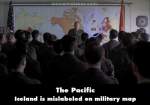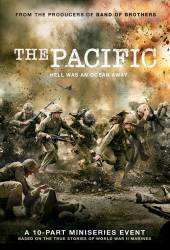Factual error: John Basilone was actually a Sergeant when he won the Medal of Honor at Guadalcanal, but is shown wearing the insignia of the higher rank of Platoon Sergeant. However, when his medal citation is read out it does give his correct rank (although senior sergeants in the US forces are commonly addressed simply as "sergeant", official citations give their full rank).

Factual error: On the map behind the colonel during the first scene, Iceland is labelled as being under Nazi control. This is incorrect, as the British were in control of the country during the whole of the war. (00:05:10)
Factual error: The map shown has U.S. interstates displayed, but the U.S. interstate system wasn't developed until the 1950's. (00:06:30)
Factual error: The climax of the first episode, The Battle of The Tenaru River, is not historically accurate. Leckie did not run about shoring holes in the Marine defensive line. The real heroes of the engagement known variously as The Battle of Alligator Creek (a misnomer - no alligators in the South Pacific), Battle of the Tenaru River (mismarked on Marine maps, properly known as The Battle of The Ilu a tidal lagoon) were Marines Leroy Diamond, Al Schimd and John Rivers. These men accounted for over 200 Japanese KIA. All three paid dearly. Rivers was killed, Diamond sustained over 8 bullet wounds and Schmid was blinded. For their gallantry in action the three were awarded the Nation's second highest honor the Navy Cross. An accurate depiction of this battle was in the movie "Pride of the Marines."
Factual error: General Alexander Archer Vandegrift, who awards John Bassilone the metal of Honor (MOH), is wearing the MOH ribbon himself. General Vandegrift was not awarded the MOH until 1943, after Sgt. Bassilone. (00:21:26)
Factual error: Robert Leckie returns to Bergen County, N.J. in the mid '40s. While talking to his dad he says of that afternoon "Bergen Catholic plays Don Bosco Prep." Bergen Catholic wasn't established until 1955, and while Don Bosco did exist in the 1940s, it didn't have a football program until the late 1950s.





